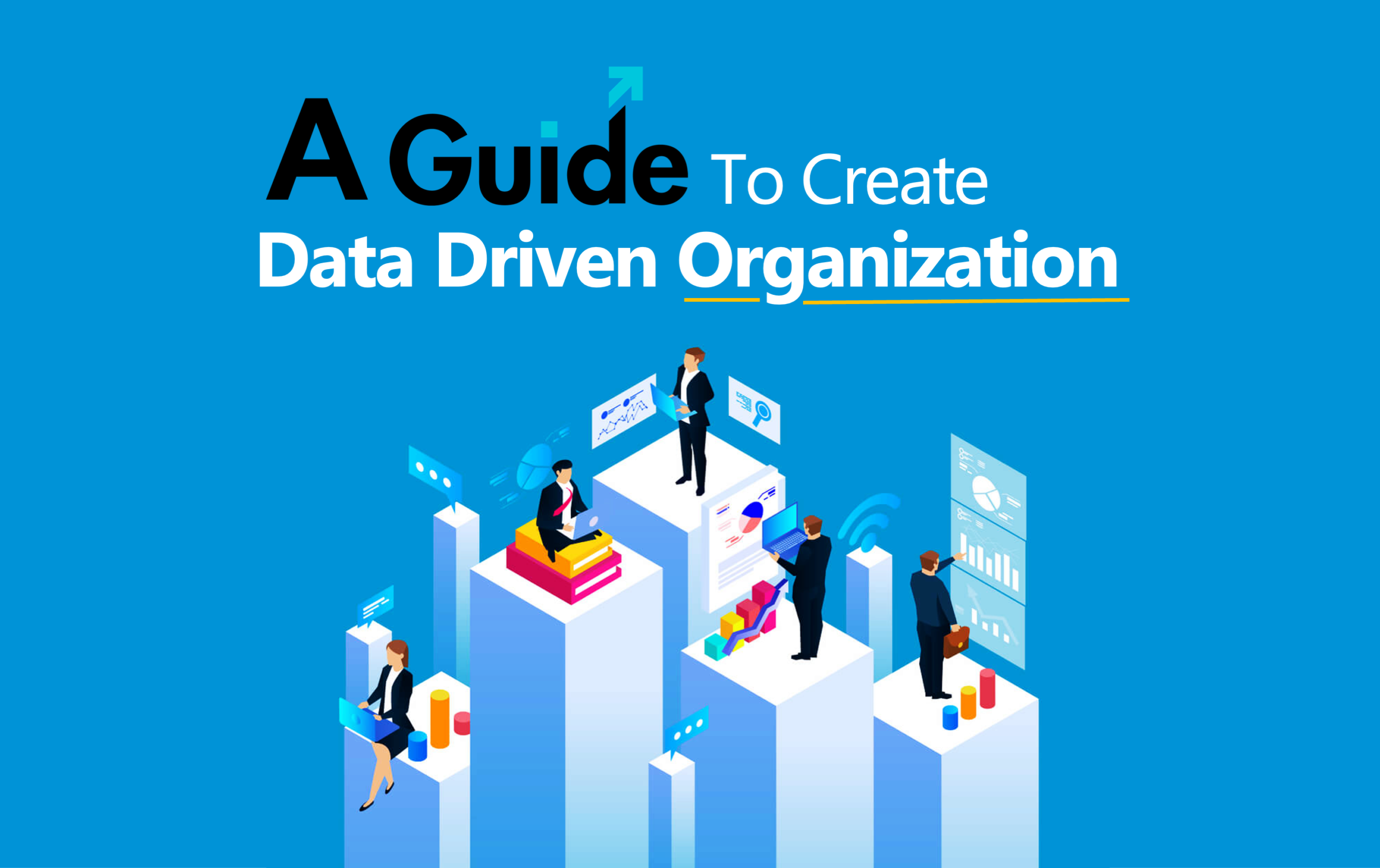A Guide to create Data Driven Organizations

Data management and analysis is some of the most important aspects for businesses in today’s time. Most organizations, especially large enterprises, are investing resources in collecting, storing, securing, and analysing their data. But why such serious focus on data?
McKinsey Global Institute says that data-driven organizations are: –
- 23 times more likely to acquire customers
- 6 times as likely to retain customers, and
- 19 times as likely to be profitable
But what is Data Driven Decision-Making, and how does it matter in organizational growth?
What Is data driven organization:
A data driven organization is an organizational culture that prioritises data-driven decision-making. Data culture ensures critical decisions are well-informed, data is accessible to everyone who needs it, and information is precisely designed to be easy to use.
Why adopting Data Driven Culture is important?
Data culture is important as it empowers organizations to make better decisions faster.
When organizations make data-driven decisions they are able to scale their businesses faster and use the information they collect to make value-driven decisions. This new way of thinking can improve business operations, reduce costs, reduce uncertainty, and build strong workforce. Organizations that have embraced data culture have drastically improved their decision-making process, with some reporting between 40%-60% growth in a year based on leveraging their data for more informed decisions.
Role of KPI’s in data driven decision making:
Identifying and tracking KPI’s is a base of data driven decision-making as it lets you know if your business is on a right path- or you should change a course of action to avoid losing valuable time and money.
Customers, Employees and Vision of the Founders/C-suite people are most crucial aspects in the growth of any organization. At times organizations focuses on the Customers and Strategic goals but miss on the Human Resources they have. Afterall, HR is about managing human beings so perhaps a more instinctual or emotional approach would be best suited? Not at all.
KPIs are powerful tools that help you:
- Not only monitor company financial health but Operational efficiencies, production efficiencies, sales performances and much more
- Measure progress against strategic goals.
- Spot problems early on and
- Analyse HR data beyond just people metrics but helps in building more efficient and skillful workforce
That’s all information any business needs to take strategic decisions based on the insights generated from their data.
Establishing and tracking KPI’s helps you visualize relevant metrics side by side, analyzing strategic goals in one place. Here are some and consider some of the associated metrics you would likely want to track:
Financial Health: Profit and lost, current ratio, Burn rate, Operating cash flow, vendor management expenses
Marketing effectiveness: Cost per lead, keyword performance, conversion rate, average lead score
Human Resources: Employee satisfaction, Employee retention, Cost per hire, Training costs, Recruiting conversion rate, Employee productivity.
Customer service: Cost per call, Customer satisfaction ratio, First response time, customer retention rate, average resolution time.
IT performance: Service downtime, IT ROI, Unsolved tickets per employee, mean time to repair
Steps to establish data-driven decision-making approach in the organization:
- It starts at very top:
Establishing data practices needs a top-down approach which usually requires to lead by C-suite leaders within the organization and through data driven decision-making examples.
- Choosing Metrics:
Leaders should influence their colleagues on choosing what KPI’s and measures to track to keep each team member on the same page.
Suppose a company can profit by anticipating competitors’ price moves. So a team should continuously make explicit predictions and track direction of such moves. Quality of those predictions also be tracked. It will help improve day by day.
- Improve data access issues
The most common issue we encounter for many of our clients well is obtaining the data from different sources. Despite of separate efforts taken to gather and store the data, accessibility becomes an issue due to which analysts’ can achieve much with the available data. So, data accessibility is most important aspect to moving towards data driven organization.
- Quantify uncertainty
Every business have to understand that absolute certainty is impossible and certain things have to be analyzed such as data reliability, data modeling etc and based on that businesses should rigorously evaluate uncertainties in data driven insights. Finally, an emphasis on understanding uncertainty pushes organizations to run experiments.
- Make robust PoC’s
The better approach to begin with is creating Proof of Concept where core part of the project is taken into consideration while producing insights. It will help in improvising on potential issues of – greater data volumes, complex data models, and better runtime performance.
- Use analytics tools:
Data-driven organizations appreciate the value of a business intelligence (BI) solution that delivers analytics functionality. Tools like Power BI provide real-time value while being scalable, secure, and available on-demand. Mobile functionality adds an additional layer of opportunity, allowing users to access information from anywhere, allowing remote productivity.
- Standardize processes
Each department needs to be in sync with the other to avoid hiccups which may cause during the transformation process. Data driven organizations rely on standardized processes which lets data flow with routine and predictability.
8. Measure and improvise
Measurement and improvisation of the data practices after certain intervals makes organizations identify opportunities to deep dive further into their data and generate more valuable insights. These organizations are at advantageous position by having the crucial ingihts on their fingertips.
It is critically important for organizations in today’s time to implement a data-driven culture to be ahead of their competitors and also have a first-mover advantage. BI and data analytics solutions can help you lead there with interactive, real-time dashboards that are easy to understand and interpret data from. If your organization would like to know more about how we can accelerate the growth of your business, click here to get in touch with us.
